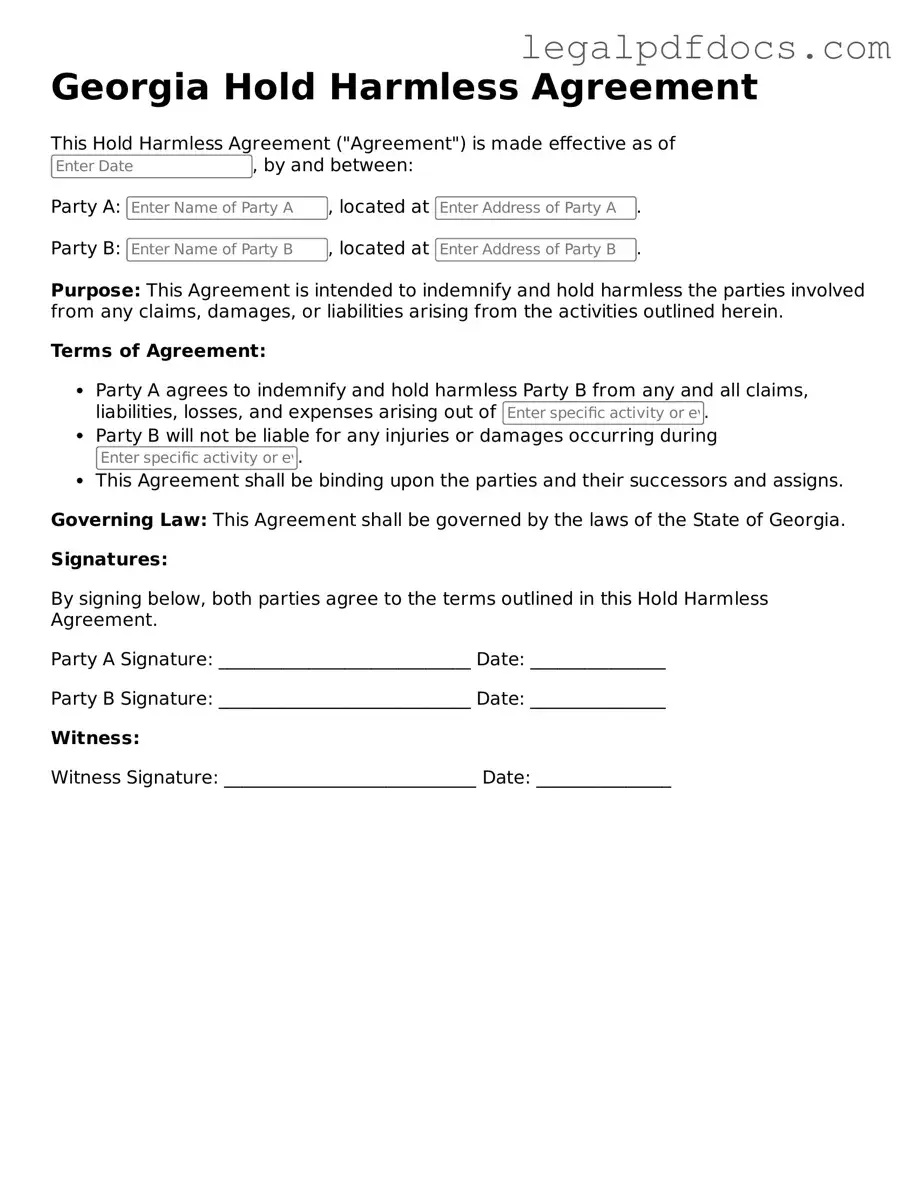The Georgia Hold Harmless Agreement form serves as a vital tool for individuals and organizations seeking to protect themselves from potential legal liabilities. This form is commonly used in various scenarios, such as rental agreements, construction contracts, and event planning, where one party may be exposed to risks associated with the actions of another. By signing this agreement, parties acknowledge their understanding of the risks involved and agree to assume responsibility for any claims, damages, or losses that may arise. This proactive approach not only fosters a sense of accountability but also promotes transparency in relationships between parties. Additionally, the form typically outlines specific conditions under which the hold harmless clause applies, ensuring that all parties are on the same page regarding their rights and obligations. Understanding the nuances of this agreement can significantly reduce the likelihood of disputes, making it an essential consideration for anyone entering into a contractual relationship in Georgia.
